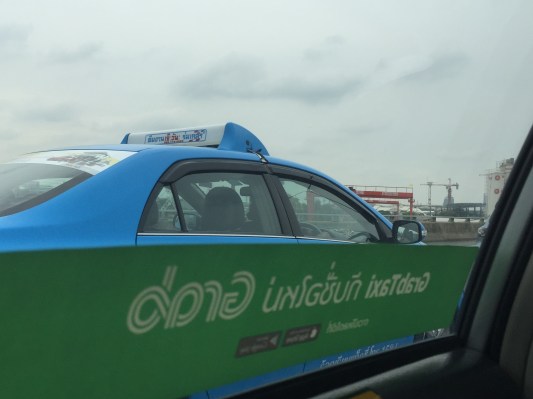It isn’t often that ride-sharing companies can introduce new services or products that really go much beyond what they already offer, i.e. trips in vehicles, but that’s what Grab, the company rivaling Uber in Southeast Asia, is aiming to do.
The Singapore-based firm said today it plans to allow its users to pay for items outside of its service using its payment system. ‘GrabPay,’ its cash-less digital wallet service, was first announced earlier this year and sits inside its app.
“Grab will integrate the payments platform into the Grab app as a mobile wallet option within GrabPay, enabling any mobile user to use the Grab app to pay for not only their daily transport needs, but also other lifestyle services,” the company explained.
Grab is initially targeting Indonesia, Southeast Asia’s largest country with a population of some 250 million people, with the aim of providing a ‘payment platform’ to users there before the end of this year. It has partnered up with Lippo, a billion dollar Indonesian retail conglomerate, on the project. Lippo, which is a Grab investor and has ventured into e-commerce and tech investments, will be the first retail partner, enabling customers of its businesses — which include department stores, cinemas and online shops — to pay via the Grab app. Over time, support for other retailers could be added.
Ride-sharing to payments may seem like a curious expansion, but it is entirely logical in emerging markets where there is no single dominant payment system. Not only does it help strengthen engagement with existing users, who can potential use it more regularly, but it could help widen Grab’s userbase by appealing to more people, too. “Could” is the operative word here because the online payment scene is hugely fragmented with mobile operators, banks and others like messaging app Line pushing their own solutions on the market. Getting Lippo on board is a big boost for Grab, for sure, but it is by no means game, set and match.
“The potential of developing a mobile payments platform in Southeast Asia is limitless,” Grab CEO Anthony Tan said in a statement. “The majority in Southeast Asia are unbanked but are armed with mobile phones. We need to find a cashless solution that helps them manage their money and mobile wallets is one way forward.”
We’ve seen this move before in Asia. Ola, Uber’s rival in India and an ally to Grab, spun its in-app payment systems into a standalone app last November. Grab is keeping its service inside its core app, for now at least, but the company is sure to have been in contact with Ola, its fellow “Anti Uber Alliance” member, for tips and pointers.
Grab’s business is more than just Indonesia, although the company recently said the country is its largest in terms of rides completed, and it hinted that this Grab Pay platform initiative will at some point expand to its five other markets: Singapore, Thailand, Vietnam, Philippines and Malaysia.
“We will work with local partners to make cashless transactions a reality for the majority in Southeast Asia,” the company said in a statement.
